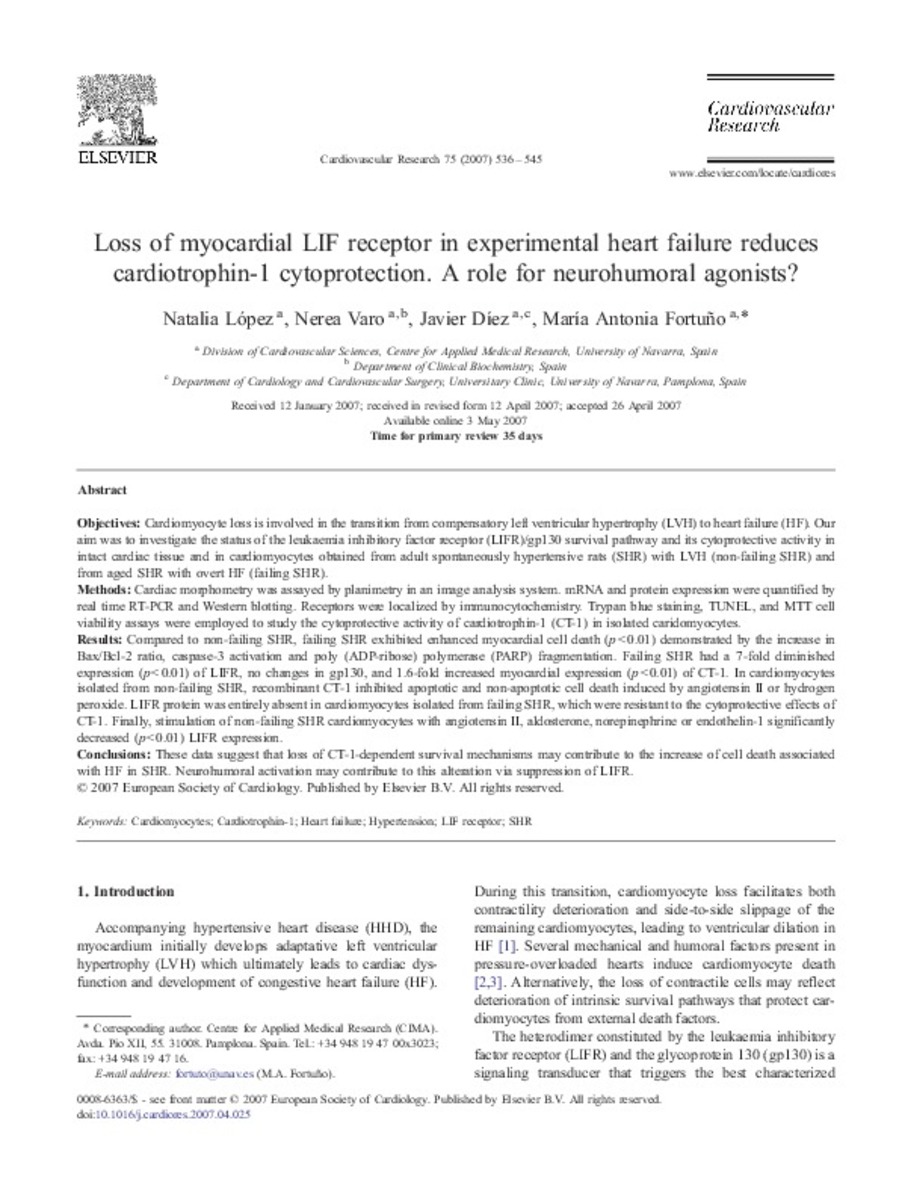Loss of myocardial LIF receptor in experimental heart failure reduces cardiotrophin-1 cytoprotection. A role for neurohumoral agonists?
Keywords:
Cardiomyocytes
Cardiotrophin-1
Heart failure
Hypertension
LIF receptor
SHR
Publisher:
Oxford University Press
Citation:
Lopez N, Varo N, Diez J, Fortuno MA. Loss of myocardial LIF receptor in experimental heart failure reduces cardiotrophin-1 cytoprotection. A role for neurohumoral agonists? Cardiovasc Res 2007 Aug 1;75(3):536-545.
Statistics and impact
0 citas en

0 citas en

Items in Dadun are protected by copyright, with all rights reserved, unless otherwise indicated.











